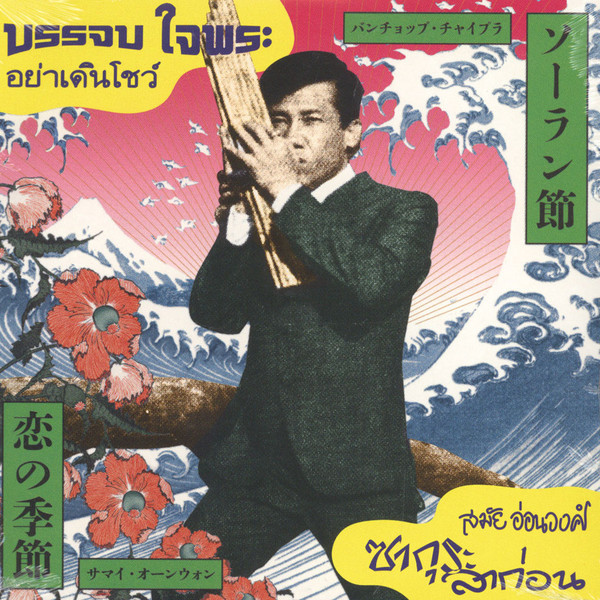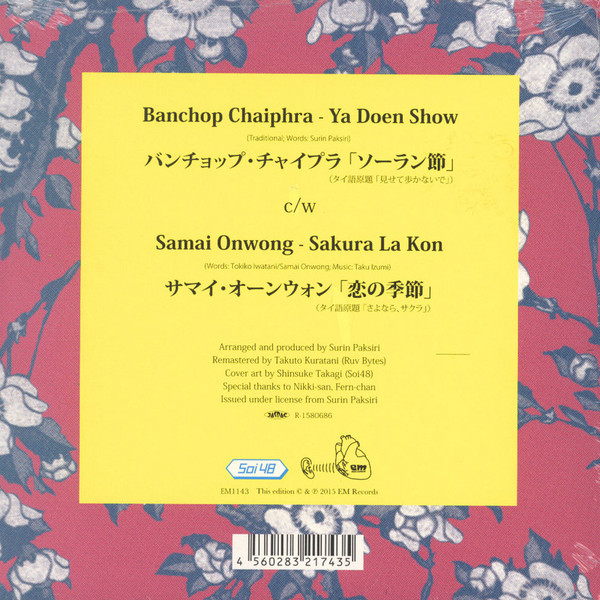ALL RIGHTS RESERVED © CG
Open today: 10:00 - 17:00
1 / 0
Banchop Chaiprah Samai Onwong
Ya Doen Show / Sakura La Kon



Artists
Labels
Catno
EM1143 none
Formats
1x Vinyl 7" Single Remastered
Country
Release date
Jan 1, 2015
Genres
Styles
Banchop Chaiprah / Samai Onwong - Ya Doen Show / Sakura La Kon | EM Records (EM1143)
EM Records: ...This 7-inch is a gift from the past, reissuing two rare Thai treasures from the late 1960s, big hits from that time which were actually covers of Japanese songs. Pan-Asian music produced by Surin Paksiri, a legendary presence in the Isan music scene from the 1960s until the present. The first song "Ya Deon Show" was Paksiri's first hit, a Thai-language version of "Soran Bushi", a traditional work song of Hokkaido fishermen, sung here by popular actor Banchop Chaiphra. The song fuses a Luk Thung arrangement with a Japanese "Dodonpa" rhythm. The second singer here is Samai Onwong, a key force in the development of Thai pop music, with "Sakura La Kon (Goodbye Sakura)", sung in both Japanese and Thai. The original was a 1968 hit by Pinky & The Killers and features some fine Khaen playing by Samai, lending a bittersweet Thai feeling. With English lyrics and liner notes, this is a lovely treat, guaranteed to bring a smile and perhaps a tear.
What is luk thung?
A musical genre whose name means ‘country person’s song’ or ‘children of the field’. The name became established in the latter half of the 1960s and now has the status of a national genre of popular song unique to Thailand. The lyrics of luk thung songs deal mainly with the rural idyll, comparisons between the city and the countryside, life in the big city and current affairs. There are certain typical traits to the music, but no official musical form.
$26*
*Taxes included, shipping price excluded
A
Ya Doen Show
B
Sakura La Kon